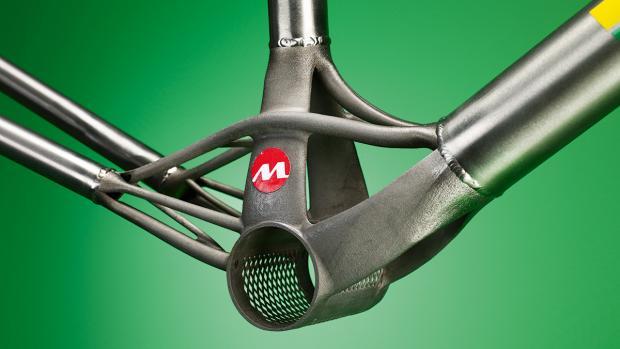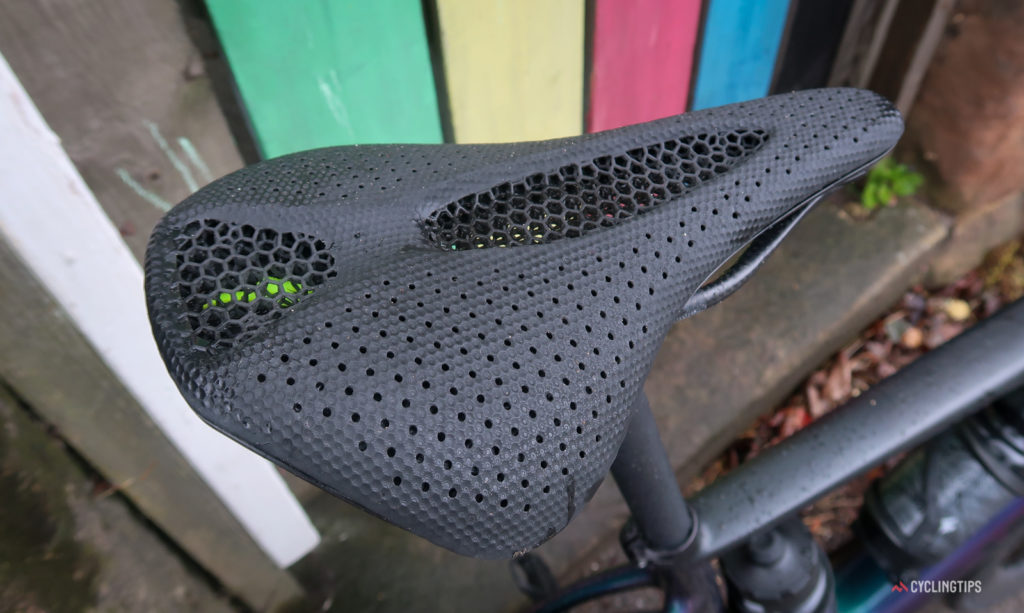A quiet revolution has been occurring for over ten years in the cycling world. More and more bike components are getting 3D printed. In this article, we’ll give you an overview of what has been happening in 3D printing bicycles, assess the usefulness of 3D printed bike parts, and look at the future of Additive bicycles. As we discuss here, 3D printed bikes have been in development since 2011, mostly in one-off form. Usually, this is in the form of single components but people have 3D printed accessories and even bicycle tires.
In 2016, under the auspices of Flam3D,15 bicycle-mad Belgian firms and organizations came together to build a host of different components of a demo bicycle. This example illustrates how we can use various polymer and metal technologies across components.

Storied frame builder Reynolds collaborated on a weight-optimized 1-kilo frame with 3D printed brackets. Through finite element analysis and 3D printing, we got a combination of the old and new in a test frame. Although costly, powder bed fusion is a real solution for high-value precision parts that must be lightweight. In this application, combining it with old school tubes was a cost-effective and logical choice, since these would be far too costly to print.

A much more futuristic-looking frame was printed in its entirety by MX3D using wire arc additive manufacturing (WAAM). This uses lower-cost feedstock in a machine that is lower cost per hour. Results are not as accurate, not as intricate, and rougher, but this can be cleaned up in post-processing. WAAM and similar DED technologies are very suitable for the manufacturing of bicycle frames. But, here the real question is: where is the business driver? Can we find optimal geometries that would justify higher costs?

AREVO has been making carbon fiber frames for e-bikes and road bikes for a number of years now. More recently the firm has had a Kickstarter for its Superstrata bikes and Scotsman electric scooters. By going direct to consumer, the company not only funds its marketing, but also ignores any channel partners building a brand and distribution offering that is direct to consumer.
New technologies often disrupt value chains and this is a good example of the possibilities. If Instagram becomes the new high street and even bypasses online bike retailers, the change in the business may be more impactful even than the change in the technology. Think of the popularity of regular carbon fiber, which led Taiwan to become the main global hub of bicycle manufacturing, covering the whole market from inexpensive to very costly frames.

New technologies can also usher in the development of new startups. Urwahn has extensively used 3D printing for components and news value over the years. The company makes various steel components using powder bed fusion. What I love about them is that they show raw, unfinished parts and are demonstrating how 3D printed components, together with craft, can usher in a new era.


Established companies are also turning to 3D printing for some marketing pizazz and perhaps some more functional parts. Specialized is looking to improve your ride through using vat polymerization for seat components.

Component maker Fizik has a rival offering that is also meant to eventually become a mass-customized saddle individualized to the rider. In both of their cases, 3D printing’s ability to mass customize using lattices, meshes, and adaptive geometry means that we could make an individual fit that may outperform. Usually, the business cases for unique geometry with 3D printing are very good. Here, we also have a tangible benefit in that it could potentially be more comfortable, letting you ride longer or perhaps even faster with less discomfort.

By combining relatively small bicycle parts with mass customization, we really hit on some interesting potential business cases for 3D printing within the bicycle market. Bicycle handles that are mass-customized to be more comfortable over long rides would be another exciting application. Meanwhile, its easy to see how mass-customized frame geometry could be made to your individual power output, body and needs. One could keep the tubes of old but make an angled frame element that would optimize the frame to your body. We could even customize that element for your individual technique or to your way of cycling or your ideal position on the bicycle. Two identical twins that cycle differently or have different ways of pedaling may, therefore, get completely different geometries. In fact, Arevo’s Scotsman scooter is customized based on rider height, weight, arm and leg length.
One reason that I’m extremely optimistic about bicycle parts is that the high-end road bikes are very costly. The sky is the limit for team bikes and consumers often buy these bicycles, as well. A BMC Teammachine could be over $15,000, for example, and I regularly see $5,000 or $10,000 Cervelos. There is an astounding amount that a team may pay for a bike that gives them an edge. There is also a surprisingly large group of people willing and able to plonk down car-type money for bikes they sometimes use in the weekend. Demand is grown in part through team use, but also through selling technologies and new materials.
Given the economics and the accessibility of 3D printing, I do think that we shall be seeing many more 3D printed bike components in the future. I’d also expect more components sold for consumers directly. We’ll continue this series in a next installment and go deeper into those prospects.
Subscribe to Our Email Newsletter
Stay up-to-date on all the latest news from the 3D printing industry and receive information and offers from third party vendors.
You May Also Like
Precision at the Microscale: UK Researchers Advance Medical Devices with BMF’s 3D Printing Tech
University of Nottingham researchers are using Boston Micro Fabrication‘s (BMF) 3D printing technology to develop medical devices that improve compatibility with human tissue. Funded by a UK grant, this project...
3D Printing Webinar and Event Roundup: April 21, 2024
It’s another busy week of webinars and events, starting with Hannover Messe in Germany and continuing with Metalcasting Congress, Chinaplas, TechBlick’s Innovation Festival, and more. Stratasys continues its advanced training...
3D Printing Webinar and Event Roundup: March 17, 2024
It’s another busy week of webinars and events, including SALMED 2024 and AM Forum in Berlin. Stratasys continues its in-person training and is offering two webinars, ASTM is holding a...
3D Printed Micro Antenna is 15% Smaller and 6X Lighter
Horizon Microtechnologies has achieved success in creating a high-frequency D-Band horn antenna through micro 3D printing. However, this achievement did not rely solely on 3D printing; it involved a combination...





























